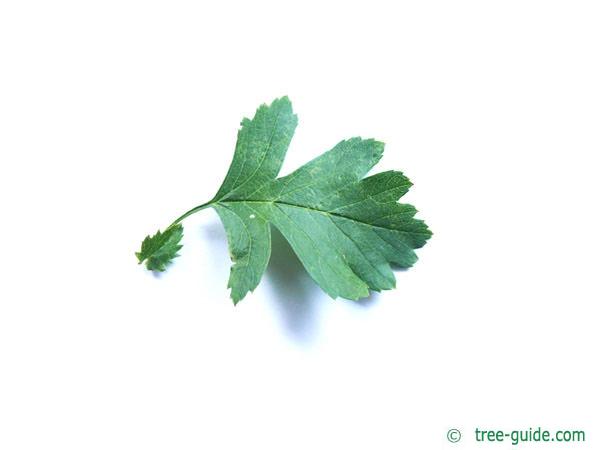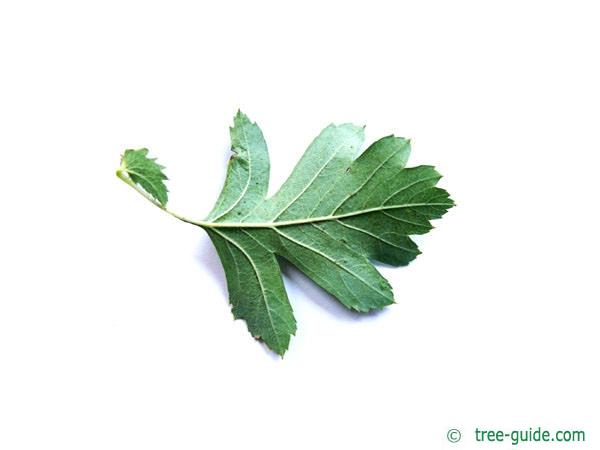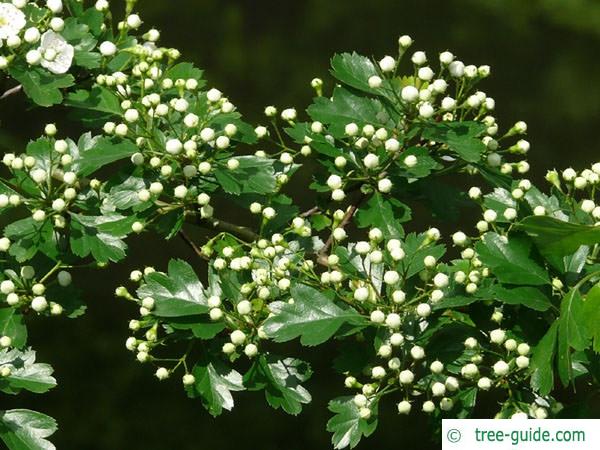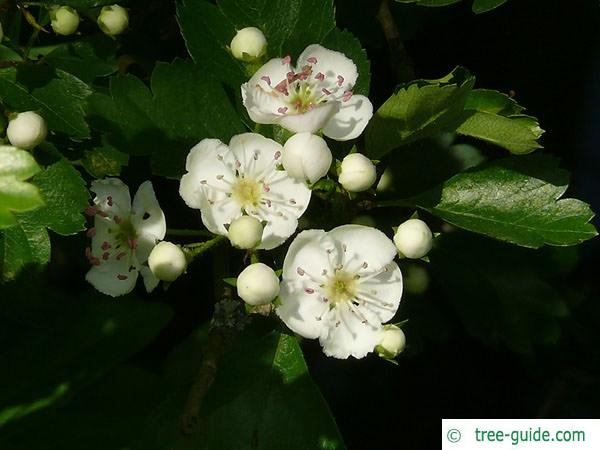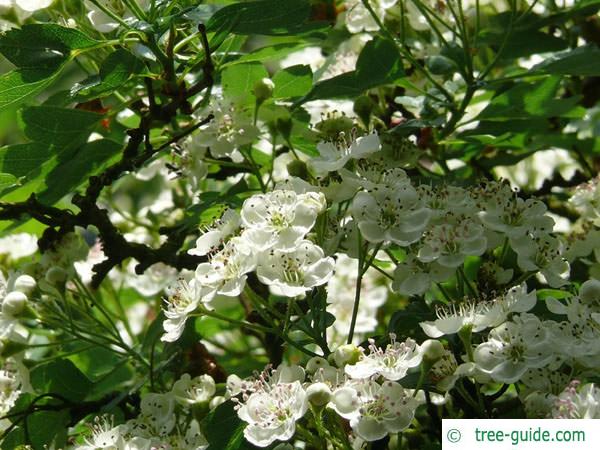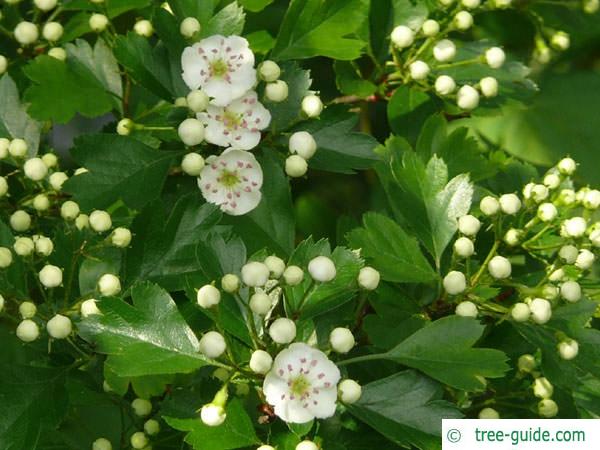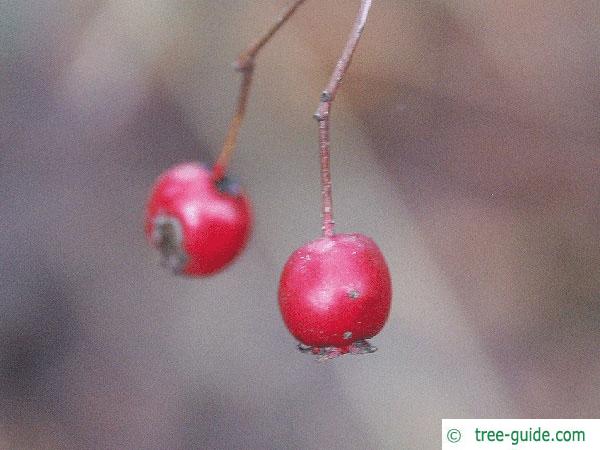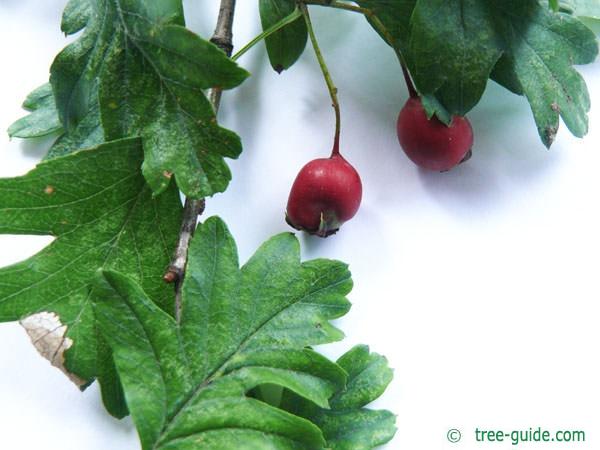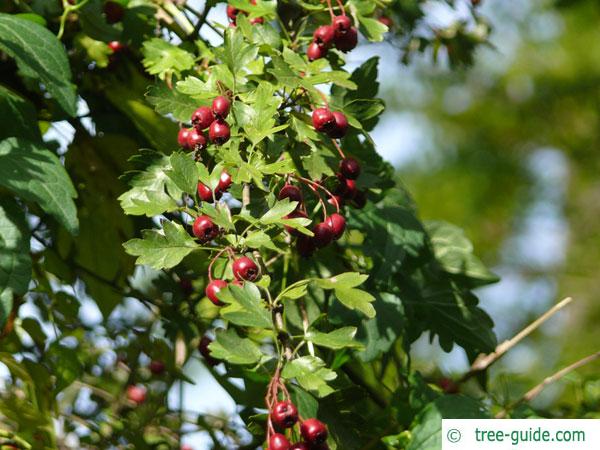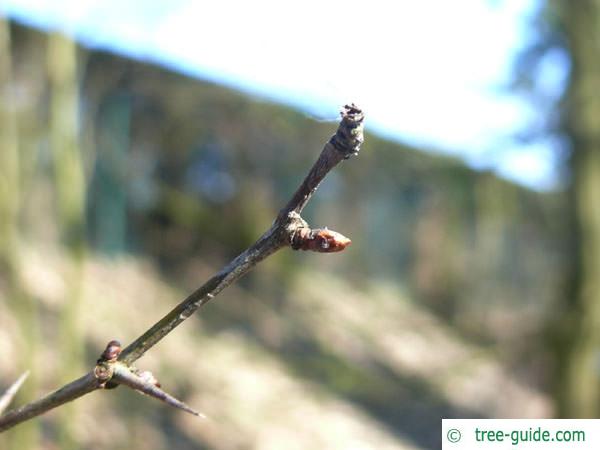Basisdaten
In Europe, North Africa and West Asia, do the hawthorn occurs naturally. Since the hawthorn has spread widely, it is meanwhile found in many parts of the world.
Tree profile
The leaves of Common hawthorn are obovate, deeply lobed and 2 – 4 cm (0.8 – 1.6 in) long. The upside is dark green and the underside pale green. The leaf margin is serrated.
The flowers stand erect together in fascicle. The single flower has five white petals. The fragrance is intense.
The fruit is apple-like, light red and about 1 cm (0.4 in) in size.
The branches are staffed greyish and with thorns. The buds are small, red, round and protruding.
hedge plant, planting in groups
Hawthorns additional information
overview leaves | overview blossoms | overview fruit | overview trunkoverview winter | trees







